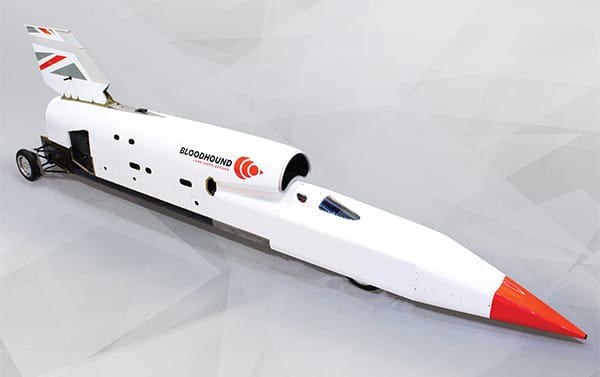
The team behind the Bloodhound LSR car will head to South Africa from September to prepare for a series of test runs on the dry lakebed of Hakskeen Pan, Northern Cape from mid-October.
The high-speed tests will come two years after successful 200mph (320km/h) UK runway trials at Cornwall Airport Newquay and less than a year since the project was rescued by Ian Warhurst, CEO of Grafton LSR.
The specially prepared tracks on the lakebed at Hakskeen Pan will see Bloodhound LSR’s pilot - and current world land speed record holder - Andy Green use the vehicle’s Rolls-Royce EJ200 jet engine to accelerate to speeds of up to 500mph, and possibly beyond. If the tests go to plan, the Bloodhound team will use 2020 to to beat the current LSR set by Green in 1997 in Thrust SSC (763.035 mph).
A key period for the car will take place between 300 and 500mph when the vehicle’s stability transitions from being governed by the interaction of the wheels with the desert surface to being controlled by the vehicle’s aerodynamics.
“It’s a dry mud surface,” Green told reporters. “The wheels are impacting 10-15mm into the surface, cutting ruts that will give lateral grip. Between those two speeds – when you’re getting up to above 200, 300 and 400mph – the wheels start to rise out of the surface and start to plane. Suddenly you’re down to 10, 8 and 6mm of impact into the desert and we’re getting very small contact.”
He added that the 95kg, 900mm diameter wheels are designed to rotate at just over 10,000rpm, or 170 times a second. “At that speed, the wheel rim will be pulling 50,000 times the force of gravity radially outwards.”
During a press conference, Warhurst added that ‘going fast is optional, stopping isn’t’ and to this end the team will conduct tests on brake parachutes that Green said work up to 90 per cent of the speed of sound, or around 670pmh.
“At that speed, they’d be generating around nine tonnes of drag,” he said. “Clearly, we won’t be testing at those sorts of speeds, but we’ll certainly get up to 5,6,7 tonnes of drag and measuring how that affects the…handling and stability of the vehicle.”
The Bloodhound team added in a statement that terabytes of information will be gathered by over 500 sensors and cameras built into the car during the high-speed tests that will be shared with academics at Swansea University. Students will then be invited to analyse the data to validate the CFD model ahead of the land speed record attempt.





April 1886: the Brunkebergs tunnel
First ever example of a ground source heat pump?